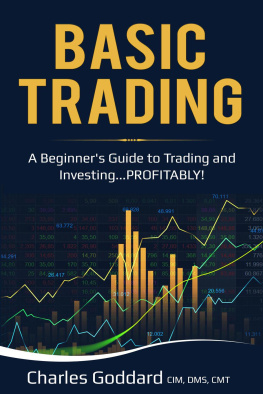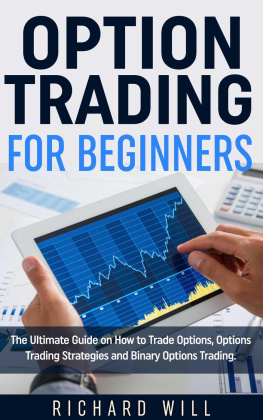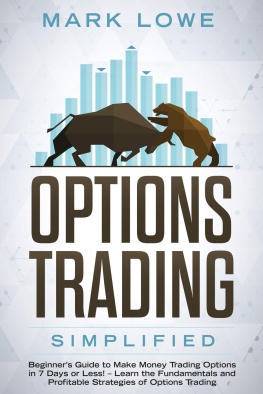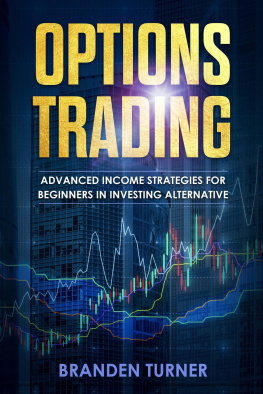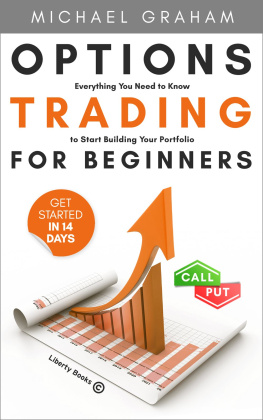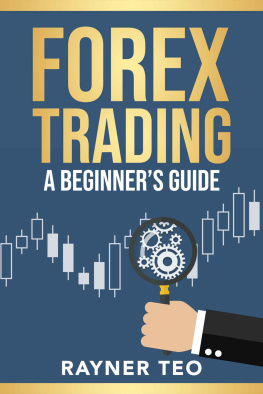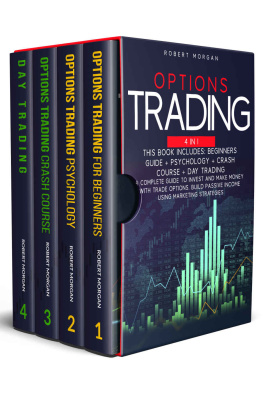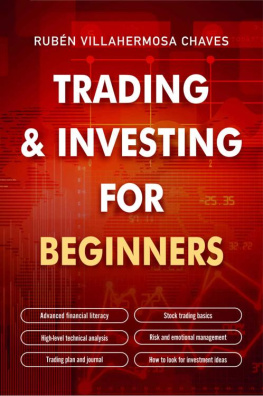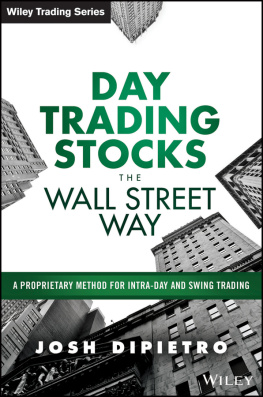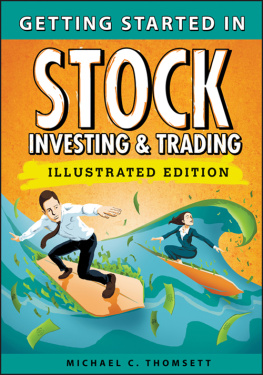
All rights reserved. Unauthorized distribution of all or part of this publication in any form other than personal permitted use is prohibited
C opyright: Charles R. Goddard 2020
- Preface
6 - Introduction
15 - Section I .......... Chart Set-Up
28 - Section II ........... Trends and Trendlines
35 Section III......... Support & Resistance
42 Section IV......... Candle Patterns
53 Section V.......... Chart Patterns
75 Section VI......... Putting it All Together
111 Section VII..... Course Announcement
Preface:
First, a bit about myself. I laboured in the financial industry for many years. I have invested in everything from stocks and mutual funds to real estate and commodities, and an episode I am not particularly proud of involving bull semen.
I have several industry designations. Here are four biggies:
CIM = Chartered Investment Manager
DMS = Derivatives Market Specialist
CMT = Chartered Market Technician
KISS = Keep it Simple Stupid (from the university of long experience)
After all the long hours of study to acquire the above, the most important knowledge came from some hoary old veterans of the markets, including the famous commodity pits of Chicago. I probably spent close to $50,000 on workshops and one-on-one mentoring with them.
They showed me that how to translate the book learning into practical application. You will find that the most important elements of trading are not that difficult to understand.
A few years ago, I left the financial industry because it was just a bloated shell of its former self. Our clients making any money was the least of its concerns. Covering its considerable ass was front and centre. When I started in the business, I could open an account over the phone with about half a page of information; when I finished, it took 16 complete pages.
I guarantee you the extra paperwork was not to protect the clients.
It has gotten to the point, and the main reason I am on this path, is that you, yes, YOU, can do a better job with a little well-placed knowledge and some attention to your account than the so-called (indifferent) professional currently on the job.
Having said that, I have to add that the industry has shaped things in such a way that the todays Financial Advisor is basically hamstrung. So, we need to cut him/her a little slack. I say we, maybe I was a little harsh.
By the time you are finished this book you will be able to look after some or all of your money. At the very least you will be equipped to make an educated decision should you get a call about changes to your account.
Much of what you read you will have to accept as fact. It is outside of the purview of this work to explain and expand. There is, however, a list of seminal works at the end of this book. If you would like to peel back the onion of the whys and wherefores, you will find it endless and fascinating, or as I do, endlessly fascinating.
When you have finished this little page turner, you may have questions, I will be most happy to answer them, drop me a line at: charlesgoddard2020@gmail.com.
Charles Goddard, Salisbury, U.K.
P.S. There is enough information between these covers for you to trade indefinitely with success. Having said that, at the back you will find details of a course that I am offering for a modest sum. It is meant to expand on this work and to add many other elements you may find useful. For a video detailing course content:
charlesgoddard2020@gmail.com
P.P.S. In the Putting it All Together section I demonstrate trading 5 instruments from January 1st, 2020 to April 30th, 2020. To keep it real, I have continued that exercise on my blog. It should help, if you are having trouble, to see trades as they unfold.
Go to: www.bluestoneenterprises2020.com.
Introduction:
Step one in your make over is to change you from an investor to a trader.
It is more respectable to be an investor than a trader, and we cant have that can we?
This does not mean turning you into a gunslinger or a riverboat gambler. I just want you to be active managing your money. Active does not mean making changes to your portfolio just for the sake of change either.
Investors have a mindset that doesnt mesh with our process. Studies have revealed this about them: if a trade is placed and it becomes profitable, the investor becomes fearful; fearful that they will lose their gains. If the trade begins to lose money; they become hopeful, hopeful that the price will come back. That is painfully backwards.
It illustrates forcefully that the biggest battle you will fight is not in the trenches of the markets, it will be between your ears. And in this process, you will be, brace yourself, the weakest link! OK, me too. We are always the weakest link.
The outlook of a trader will give you the best chance to follow a process objectively, and not to take outcomes personally.
What is our goal? The Big Move is an expression I have heard many times from long-term traders. It is definitely our prime objective, or as the leprechaun teaching a trading workshop said, it is the pot of gold at the end of the rainbow. I was in the wrong workshop, but his words stuck with me. It is glib advice (from long-term traders, that is) even if it is perfectly accurate. Just look at a few charts you will see big moves all over the shop. We can all identify them after the fact. The problem is recognizing them when they are occurring in real time. The system you will follow is a probing system. It allows us to harvest small profits, get our trade insulated (risk-free), so that if a big move occurs, we are there for it.
This chart illustrates what is possible when you follow a simple process: It is a chart of Apple and the trades we would place based following our simple process (the one espoused in this book) starting January 2017 and ending February 2019. Dont get your knickers in a knot that you dont understand what is happening, this is just a demonstration: all will be revealed.
From left to right on our chart below, the horizontal green lines represent levels of resistance that if broken represent great places to place our stop-buys i.e. enter the market.
Guidelines:
- Starting portfolio $100,000
- Trade position size 10% of portfolio
- Stop-loss (protective) at all times Trailing Stop is preferable for beginners or struggling traders. Stop is set for an initial risk <$2,000.
- Pyramid of the Big Move on condition.
The reason for placing the trades and the protective stops will become clear as we move forward.

Trade one: January 23rd, 2017
Stop-buy at $120 = $10,000/$120 = 83.53, rounded to 80 shares.
Stop-Sell (risk) = $120 - $108 (stop level) X 80 shares = $960 (<$2,000)
Trade two: August 2nd, 2017
Stop-buy at $160 = $10,000/$160 = 62.5, rounded to 60 shares
Stop-sell (risk) = $160 - $142 (stop level) X 60 shares = $1080 (<$2,000)
Next page
